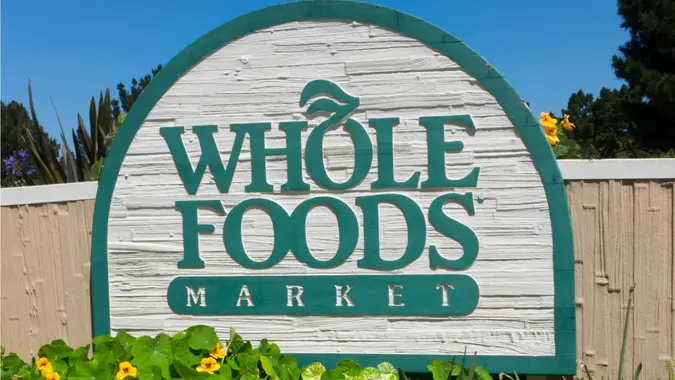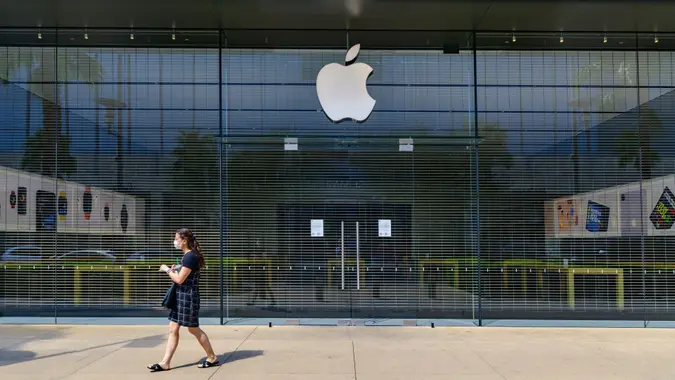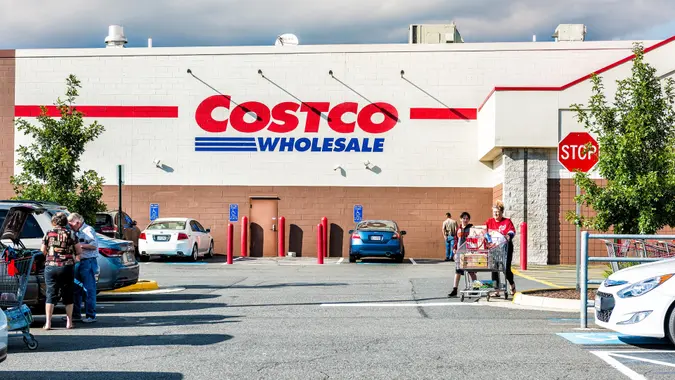Expert Claims Gas Prices Likely To Fall 10 to 30 Cents in November — Here’s Why

Commitment to Our Readers
GOBankingRates' editorial team is committed to bringing you unbiased reviews and information. We use data-driven methodologies to evaluate financial products and services - our reviews and ratings are not influenced by advertisers. You can read more about our editorial guidelines and our products and services review methodology.

20 Years
Helping You Live Richer

Reviewed
by Experts

Trusted by
Millions of Readers
Inflation has been on the mind of consumers for years now, especially since the consumer price index spiked at 9.1% in June 2022. Although the annual rate of price increases has dropped considerably, the cost of living has jumped dramatically ever since the pandemic.
As budgets are tight as Americans head into the holiday season, there’s finally good news on the horizon: One expert sees fuel prices at the pump dropping by a significant $0.10 to $0.30 per gallon in the near future.
Here are the reasons for his optimism, as well as a look at what could still go wrong.
Also see four gas-saving tips that actually work and four you should avoid.
Factors Potentially Driving Gas Prices Lower
Patrick De Haan, head of petroleum analysis at GasBuddy, told CNBC that there are three primary tailwinds that could push gas prices lower over the coming months:
- An increase in production from the OPEC+ alliance
- A seasonal switch to winter-blend fuel
- The interest rate cut in October.
According to CNBC, the OPEC+ alliance agreed to raise oil production starting in October in an attempt to gain market share. For some analysts, this was a bit of a surprise. There is typically a seasonal oil glut in the Northern Hemisphere during the winter months — something that tends to naturally drop prices already — so increasing production in that environment should lead to even lower prices.
The Northern Hemisphere winter also sees a shift to winter-blend fuel, which usually results in savings for consumers. Part of the reason is that winter-blend has a higher percentage of lower-cost butane, according to AAA. But winter-blend fuel arrives at stations during a period of lower demand for gasoline to begin with, as the summer travel season is over and Americans tend to drive less in winter. The laws of supply and demand do the rest of the work, naturally pulling prices lower.
De Haan noted that the October interest rate cut by the Federal Reserve could also help lower gas prices. While the relationship between interest rates and gas prices is indirect and complicated — and in some cases can help drive up gas prices — in this scenario, De Haan sees it having a positive effect. Interest rate cuts could portend a weakening economy, and they also lower the cost of production for oil companies, which could result in savings for consumers.
Put it all together, and De Haan said, “It’s looking fairly good for motorists in most areas,” as he anticipates a $0.10 to $0.30 drop in gas prices on average. However, he noted that in some areas, particularly the West Coast and the Northeast, prices could fall even more dramatically. According to De Haan, supply issues and refinery shutdowns in the West and an increased reliance on foreign oil in the Northeast have driven up prices, making these areas ripe for a larger drop at the pump.
Potential Obstacles to This Rosy Forecast
The factors potentially driving down gas prices this winter are powerful ones. In fact, increased supply, reduced demand and cheaper fuel production costs are the three textbook causes of lower prices at the pump. Even so, unexpected events always have the potential to trigger higher prices.
Here are some factors that could actually make gas more expensive:
- Hurricanes or other extreme weather: This is the most likely disrupter of gas prices. A major hurricane or other unexpected weather event could take refineries offline, damage supply lines, or cause other disruptions to fuel production and delivery. This would tighten supply and bump up prices.
- A pop in demand: Although demand typically falls in winter, a surprisingly resilient economy, jump in travel, or any other type of increased consumer and business activity could overwhelm supply, driving up prices.
- Tariffs or other geopolitical developments: Tariff policy coming out of Washington has changed repeatedly throughout 2025. If the U.S. government decides to implement tariffs against oil-producing nations, supply could drop dramatically, pushing prices higher. Other geopolitical risks, such as war, always have the potential to affect gas prices as well.
- Refinery issues: Refinery outages, major maintenance projects or other actions that could disrupt supply even temporarily often spike oil and gas prices.
While gas prices aren’t always easy to predict, the stars seem aligned for a drop at the pump in late 2025. Increased supply, reduced demand and the shift to a cheaper, seasonal fuel blend should push prices down.
 Written by
Written by  Edited by
Edited by 

























